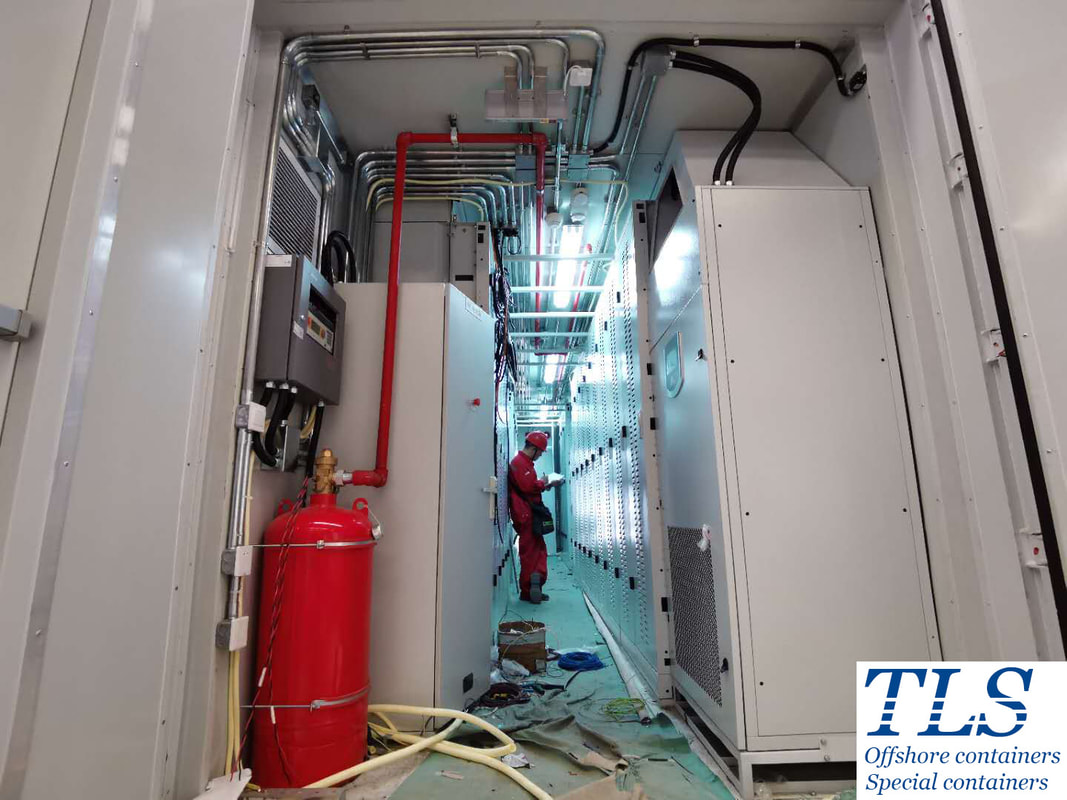|
Lithium battery fires are mainly the result of the decomposition and burning of electrolyte, which is a kind of hydrocarbon gas burning fire. In the case of battery overheating, excessive charging and discharging, battery design defects and short circuits caused by raw material defects, chemical reactions occur between battery materials inside the battery, and the electrolyte decomposes to generate a large amount of heat and gas, resulting in thermal runaway of the battery. The thermal runaway is the main reason for the burning of the electrolyte. Once thermal runaway occurs, the battery temperature rises rapidly, directly causing the battery material to burn. When the concentration of flammable gas produced by the decomposition and combustion of the lithium battery electrolyte reaches a certain level, it will explode when it encounters an open flame. In large-scale battery energy storage containers, the battery packs have the characteristics of high density and centralized distribution. The lithium battery modules are connected in series to form a single battery pack and multiple battery packs. A large-capacity energy storage unit is formed in parallel, which not only increases the probability of lithium battery failure, but also increases the fire spread channel because the battery cannot be cut off in the event of a fire. There are a large number of auxiliary electrical equipment in the lithium battery energy storage container. The unsafe use of these equipment also increases the overall fire risk of the storage container, such as accidental high voltage and large current (lighting, surge) intrusion. High voltage and high current invade the lithium battery energy storage container. On the one hand, the electronic equipment in the lithium battery energy storage container is highly integrated, which reduces its resistance to high voltage and high current; on the other hand, the system uses a large number of communication lines have added channels for high voltage and high current intrusion. At the same time, the failure of the protection element is also one of the important causes of fire. Long-term heating and ultra-high temperature caused oxidation and corrosion of some electrical components in the cabinet, and aging of some insulating materials. The overcurrent protection in the battery, the DC fuse and the overcurrent fuse in the battery failed to effectively isolate the short circuit fault and could not meet the original design resistance and insulation. Therefore, the overall electrical safety of the lithium battery energy storage container system has a large hidden danger, and it will cause the spread of fire. When a lithium battery burns, a large amount of gas is generated, mainly organic gases such as hydrogen, carbon monohydride, carbon dihydride, methane, benzene, and toxic gases such as hydrogen chloride and hydrogen fluoride. In the event of a fire, the hydrogen, carbon monohydride and other combustible gases released by the lithium battery inside the lithium battery energy storage container under high temperature conditions cannot be effectively controlled, which may cause the fire to spread rapidly or even explode, endangering the main electrical equipment, and causing property damage. The fire extinguishing system in Lithium battery energy storage container adopts non-conductive suspension type, cabinet type or pipe network type heptafluoropropane (HFC) fire extinguishing system. At the same time, a nitrogen fire extinguishing system is also arranged. The lithium battery energy storage container gas fire extinguishing system consists of heptafluoropropane (HFC) fire extinguishing device, pressure relief device, gas fire extinguishing controller, fire detector and controller, emergency start stop button and isolation module, smoke detector, sound and light alarm, etc. to realize automatic detection, alarm, and fire protection functions in the protection zone. In the containerized lithium battery energy storage system, each container is a protection area, when smoke or temperature change is detected, the sound and light alarm will immediately respond to the fire. Extinguishing the fire in the early stage ensures the safety of the energy storage container. At the same time, considering the processing method of the collected signals, to increase the number of audible and visual alarms and arrange them in places where there are frequent patrols and guards. At the same time, considering that lithium battery energy storage containers are prone to explosion, according to the characteristics of different lithium batteries, the corresponding explosion-proof system is configured according to the characteristics of different lithium batteries. The fire extinguishing system is also inter-connected with the controller, the fan, power supply, etc. and transmit the fire signal to the fire control centers. Comments are closed.
|
Archives
July 2024
Categories
All
|
- Home
-
Containerised solutions
- Intelligent pressurised container | MUD logging cabin
- Battery energy storage system (BESS) container
- Flexible grid tied battery storage system
- Laboratory container | workshop container | Equipment containers
- Temporary refuge shelter | Toxic gas refuge | Safe haven
- Offshore accommodation cabin | office container
- Reefer container | Refrigerated container
- Intelligent waste water treatment container
- Fresh water generator container
- Cargo Containers
- Product photos & videos
- News & Blogs
- Contact us
|
Featured products
Intelligent pressurised container Temporary refuge (TR) shelter, toxic gas refuge (TGR) Battery energy storage system (BESS) container Containerised waste water treatment plant Fresh water generator container Reefer container Laboratory container, Workshop container Accommodation container Offshore closed container |
All Rights Reserved 2020 © TLS Offshore Containers / TLS Energy
|

